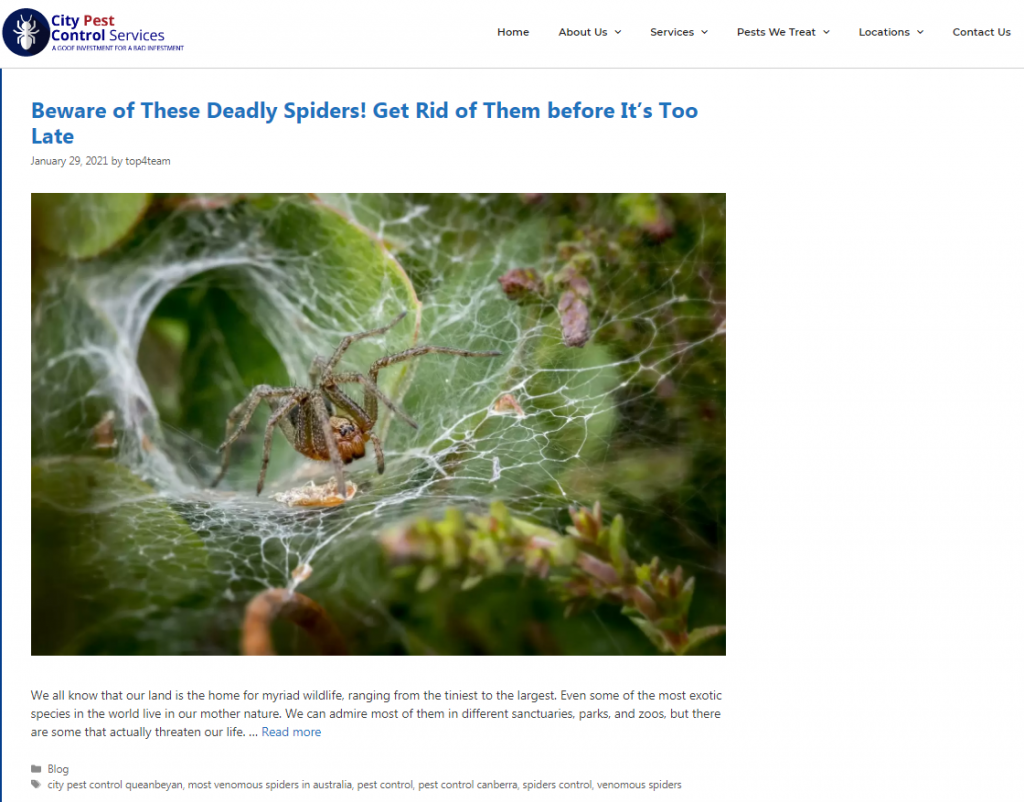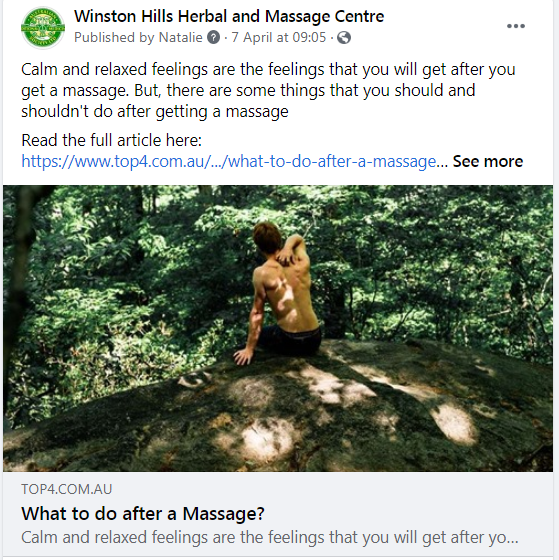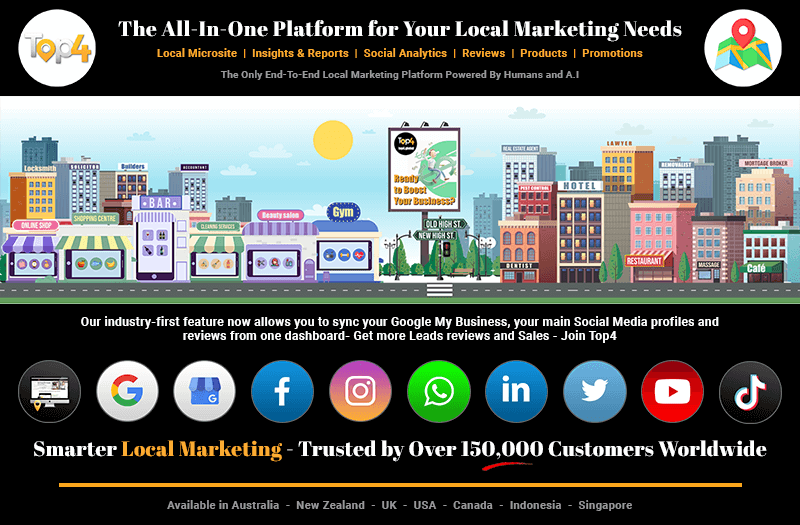
Local businesses often find themselves in an increasingly competitive SEO landscape. For example, many national businesses have large sites with a high number of inbound links, and these sites have local franchises, offices, or stores that compete for search traffic with smaller, regional companies.
This is an important consideration, given the adoption of mobile technology for driving localized searches. When consumers are using mobile devices, they are more likely to be conducting local searches, and that traffic drives leads and sales.
Competing with the larger web players may seem like an insurmountable challenge, but it’s not. For instance, many local businesses enjoy a deeper knowledge of a community than larger, regional or national chains. To generate viable, organic search traffic, and help cement their brand value among their community members, local businesses must learn to leverage these unique community insights, as well as their networks.
Blog content is a perfect vehicle for doing this. But it only works if that content is tailored to impact local search engine results and nurture a local audience. Here are eight tips for doing just that.
1. Identify your local search queries, and make a plan
Before optimizing your blog content, you’ll need a keyword strategy targeted to your locale. Specifically, you need to see what local keyword queries are driving traffic to your site, how those queries deliver value to your business, and whether you are driving the kind of local traffic you need to impact results.
Let’s use the example of a local Fruit and Vegetable Market. You may look at the keywords in Google Analytics (assuming your account is correctly linked with Webmaster tools) and find that the majority of your site traffic comes from branded keywords (i.e., keywords that include your store’s name). However, you might find a handful of visits for terms like “Australia fresh fruit market,” “vegetable store,” and possibly even some longer-tail terms such as “buy fresh vegetables & fruit online.”
Analyze your traffic and see if these more localized terms accurately describe your business. Are all your services being associated with the locations you serve? Are all the locales you serve appearing in the organic keywords you use to drive traffic to your site? If this process has identified any gaps in your keyword strategy, closing the loop here will drive your strategy forward. Alternately, you might simply try revising your keyword strategy to focus on increasing the percentage of clicks you receive for these queries.
2. Associate your products/services with your locale in your posts
When we audit local blogs, we frequently find that these blog posts often don’t target their customers’ kinds of searches, especially for businesses where locale is important. Often, the products and services aren’t optimized for search. Even more often, the posts aren’t “localized.”
If you want to impact a search such as “City pest control,” a blog post that gives mentions the city pest control is good. However, it would be better if the post also associated “City Pest Control Services,” with “Canberra or Queanbeyan.”

Don’t go crazy with this tactic by spamming the term! Not only will Google identify it as spam, but your readers will as well. Think of your keyword strategy as a way to reinforce a theme that connects your products and services to the city or region you serve. Use it judiciously, leveraging SEO writing best practices as appropriate.
3. Leverage local events
Many businesses miss out on easy opportunities to develop relevant, valuable content based on their participation or sponsorship of events within the local community.
Consider the example of the fruit & veggies again. Perhaps they sponsored a Fruit & Veg Month health promotion in Clyde north. The local fruit & vegetable market could announce their sponsorship on the blog, and note its Clyde North location. The post could go further, discussing how Farmland Fruit & Veggies market complements by encouraging increased fruit and vegetable consumption amongst primary school children.
After the event, the blog could share pictures of participants, noting any that currently, shopping at Farmland Fruit & Veggies market in Clyde North. Here again, you are reinforcing your long-tail keyword “themes.”
Another SEO benefit related to sponsoring local events is the opportunity to gain quality inbound links. Frequently, we audit sites and find links from conferences, athletic events, or business associations that have the high domain authority to local businesses. If you sponsor a reputable event, make sure you get a link!
4. Feature local subject matter experts beyond your business
Many blogs understandably focus on what we call “the business at hand,” which is the business and products or services it offers. But good things can happen when that focus is shifted outward, to other people within the community.
Let’s go back to our fruit & veggies market. Perhaps the business owner refers people to a local fruit or local vegetables. Featuring these other product providers in your blog content is a great way to capture related searches within the health and wellness category in which your fruit & veggies resides. This can be done in many creative ways. The market owner can interview the farmer, for example, asking questions about Is direct farm-to-consumer marketing right for my operation?. Or, the post could discuss a successful A Guide to Successfully Selling Your Farmers’ Market Products.
So many good things are possible with this content approach, it’s surprising that businesses don’t utilize it more often.
- Local search results can be impacted by mentioning the interviewer and interviewees’ locations and services.
- The brand of each business is elevated within the content.
- Both businesses are offering valuable content to their potential clients and expanding their relevance to their customers.
- Both businesses can link to each other, shoring up their domains’ authority.
- The businesses each grow their customer base based on mutual referrals. For example, a search for the name of the farmer could yield a search result of the fruit & veggies blog post featuring the interview. This is a win-win for the businesses.
5. Seasonal topics are viable local tactics
Every region has its seasons, and seasonality impacts local businesses and their customers more profoundly than national chains. For the example of our local fruit & veggies in Clyde North, spring time dining light and easy with crisp sugar snap peas. The local fruit & veggies has an opportunity to address this topic in its blog content, and thus to promote appropriate price range. This gives customers searching for a term like “Fruit & Veggies Market in Clyde North,” the opportunity to find content that’s particularly relevant to them via search.
Of course, some businesses are seasonal by nature. An ice cream shop in Clyde North may have a line out the door on a hot summer night, but what about January? That’s the time to leverage its blog content to promote other benefits it offers — such as its WiFi, hotspot or locally sourced coffee — and offer a seasonal coupon for strawberries lovers who need a fix no matter how cold it is outside.
Promoting the off-season blog post can also generate social referral traffic and the kind of social conversation that drives branded search terms for the fruit & veggies. Remember, Google is a dynamic entity. Winter might be an opportunity to move up in rankings when other competitors are not publishing content.
6. Participate in your community, and share your activities
Local business owners tend to be more active in their communities than larger national businesses, as these business owners likely live, work, and play in their communities. Often, they get involved in local causes, organizations, and associations based on their personal and professional interests.
Blogs are great ways to promote a business’s involvement (or its staff members) in their community. Additionally, promoting these topics can extend audience awareness of a local business by leveraging local trending topics.
Our local fruit & veggies may be advocating for a bike path that would make it easier for clients to avoid traffic and get to the studio more safely when riding their bikes. A blog post focusing on an upcoming meeting in the business’ neighbourhood can not only help raise awareness for the cause by promoting it to the blog’s readers, but it can also raise awareness for the fruit & veggies business by capturing searches related to the local farmer path.
You can also extend this tactic to participation in local business and trade associations, as well as community organizations.
7. Leverage your blog content via social media
Promoting blog content via social channels is a basic content marketing tactic that is often inexplicably overlooked. Promoting blog posts on Facebook and Twitter allows your local content to be exposed to your clients and customers’ extended network. Plus, it reinforces your business and brand’s authority and relevance.

Above are the example of blog post on social media. After investing the resources to write a quality blog post, sharing it (via Twitter, Facebook, Google Plus, and LinkedIn, for example) ensures that your content gets maximum reach without resorting to paid tactics. Additionally, Matt Cutts from Google has repeatedly reinforced that social signals are becoming more important in ranking.
Maximize the ROI of your content by sharing it.
8. It’s not all about SEO: Nurture your audience
Yes, local SEO is important. However, it’s just one part of your site’s performance. A blog can impact many other traffic segments, such as returning visitors via direct traffic, social referrals, and new visitors via inbound links.
Don’t forget about these people by only writing for SEO! Make sure you write blog content that keeps potential customers engaged and returning to your site. For example, write posts that your audience might want to share via social media, or that could be used to refer potential customers to your business.
If you offer a new product and service, make sure your existing customers know about it. Make sure you keep that local base of customers you have worked hard to cultivate; use your blog content to do it.
Summary
Blogs are excellent writing sites, owing to their versatility. They are a viable tactic for companies that represent local markets to influence local SEO and nurture a local audience. Localize your blog content to get the most out of it — use your local knowledge and experience as the basis of your content marketing strategy.
To find out how we can help you with your Website + Marketing, using our unique location marketing platform called Top4, get in touch today at www.top4marketing.com.au

Looking to build customer loyalty through social media? Don’t forget to add your business to Top4.com.au
List your business, create your own digital store to sell goods and services, and share posts on social media. Promote your business on Google instantly! Should you need help with local digital marketing then view our new Google Marketing Platform and services Top4 Marketing
Get Found On Google Promote Your Website, Reach local customers today!
Our Digital Marketing Agency Services Across All Industries Include Search Engine Optimisation (SEO), Google Marketing, Website Design, Corporate Web Development, and local location-based marketing using our own Google Marketing Platform!
Engage A Social Media Agency For Only 1/3 The Cost Of Employing A Social Media Manager…LET’S TALK!
Source: contentmarketinginstitute.com




